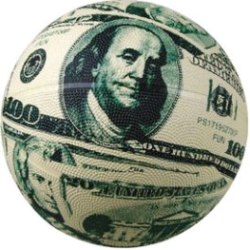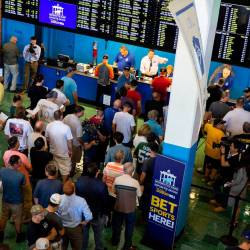Progress of Gambling and Data Refinement Methods

Sports betting is an area of gambling that attracts a great number of people, as can be seen just by looking at one of the world’s largest betting groups, Paddy Power Betfair. This year, for instance, the company saw around $1 billion wagered on Wimbledon alone. It is not only regular gamers that are participating in sports betting, though, and over the past few years, professionals involved in technology and financial industries are also increasingly betting on major sports, with even former traders now becoming interested in sports betting. Meanwhile, machine learning jobs are increasingly being advertised on bookmakers sites, but what do complex algorithms have to do with one of the most traditional and oldest hobbies on the planet?
US Origins
Sports-focused data gathering methods started in the USA, after managers found out that they could scope out tactics and trends by using the data from competitions to further their chances of winning. Exploring this theme was the 2011 film called “Moneyball”, that was based upon a Michael Lewis book in which a baseball coach enjoys an unprecedented winning streak after utilizing a data analysis system to pick new players. Across the pond in Europe, football, golf and tennis are some of the most commonly betted-on games, and bookmakers on the continent soon began adopting these same methods to help narrow down the football game odds in their favor. This consisted of changing goal and win expediencies on a spreadsheet to help learn about the trends as the match went on.
In-Play Betting
It subsequently took only a couple of years before in play betting really took off in the industry, and presently this type of betting makes up more than 60 percent of all the money that is wagered on sports. Needless to say, algorithms that use self-learning can take in large amounts of data at a time, helping bookies to consistently calculate the odds across a larger array of sporting events. As an article that appeared in the Economist entitled ‘How data changed gambling,’ explains:
“The fluid nature of in-play betting does not allow bookmakers to check odds against those offered by rivals, making it all the more important that their algorithms get it right. Powerful computing also allows for shorter downtimes. Previously, betting operators had to suspend the market for five minutes or more to adjust odds when a penalty was announced or a red card was given, frustrating punters. Bookies have cut in-play market suspensions down to less than a minute. A single trader now has the capacity to manage several events at a time, according to professionals in the industry.”
Punters More Sophisticated
While bookies have access to more specific and sophisticated ways to bet, punters are able to benefit from the same methods as well. Two professional gamblers in the 1980s, for instance, served as pioneers in quantitative gambling by betting on Hong Kong horse races, which is a perfect sport for statisticians as it features the same 1,400 horses competing against one another during any given sports season. This allows for more clear-cut and consistent models for them to work with.
Sports Betting Popularity Soaring
As the decade pass, these systems have become more refined and efficient, in the process allowing for a greater level of interest in sports betting, and resulting in significant growth for the industry. According to mathematicians, these systems are even taking some of the luck out of sports betting, and while some may consider this a bad thing, professional gamblers are thrilled at the prospect. However, some people are put off gambling against the bookies, and have turned to online betting exchanges, instead. Casual bettors, on the other hand, don’t seem to mind the progress made in the industry by such advanced quantitative methods, though, which is evidenced by a tenfold increase in the number of British people who have opened online gambling accounts over the past few years.










